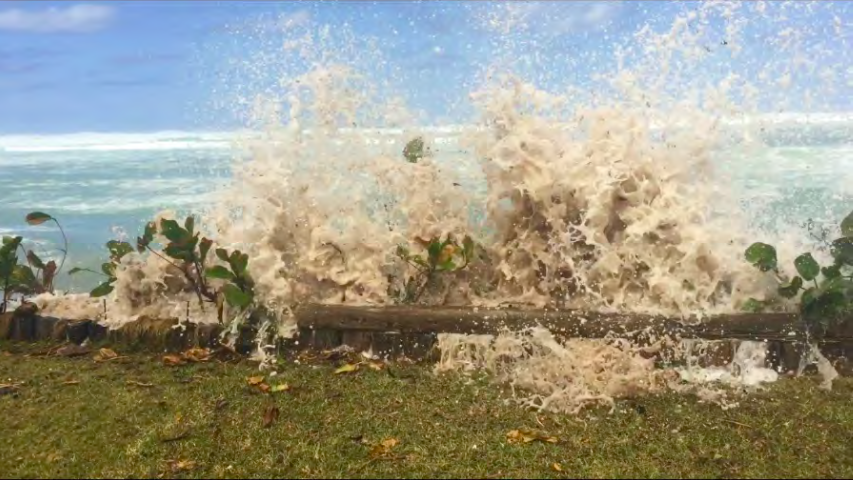If Bones Could Nest… Environmental assessments are often written with less care and attention than environmental impact statements. The August 8 Environmental Notice includes a couple of EAs that provide ample evidence.
Consider the draft EA prepared for an after-the-fact permit for a seawall fronting two lots in the Mokuleia area. In discussing possible impediments to the permit, the DEA states: “According to the [Office of Conservation and Coastal Lands] this area is sensitive to the iwi kupuna. However without positive signs of nesting no action has been required to this point.” Iwi kupuna are, of course, the bones of Hawaiians, who before European contact, were often buried in coastal sands.
The document is rife with similar howlers, of both content and style. Take this, for example: “Removal of the alterations to the existing wall is also not a viable option. The simple fact of the matter is that this issue is in fact an issue and the wall’s poor construction has proven itself time and time again to be insufficient in the defense of the property against the ocean tides and swells.”
‘My Beautiful House’: Another EA – this one a final EA – for coastal property on O`ahu shows the drawbacks of the landowner preparing his own document. Charles Tsu Yew Wong, owner of property along Lilipina Drive in Kaneohe, is seeking permits for a five bedroom, eight-and-a-half bath house with two three-car garages, a seawall extension, and other improvements. According to Wong, the city had erroneously issued him a permit for the house and now he must seek after-the-fact approvals.
Wong’s DEA runs to 438 pages and includes such extraneous information as notices of violation, building permits, architectural drawings, and window schedules. Multiple photos are also included, although it is not always clear what they are intended to illustrate.
Wong appends to his DEA comments from various agencies and, notably, neighbors. In one case, a neighbor noted that at one point, the house plan shows a floor area of 10,818 square feet, but plans for the building permit show an area of 8,917 square feet. In reply, Wong dismisses this as “not relevant.” “For purposes of the EA, the proposed new dwelling are [sic] conceptual, not actual.”
The Ko`olaupoko Hawaiian Civic Club, in its comments, urged the Honolulu Department of Planning and Permitting to refuse to issue any permit for Wong’s house. “[T]his property owner has violated building regulations for a number of years and caused runoff into Kaneohe Bay,” it noted. Wong’s reply: “I am sorry to hear that you do not like my beautiful house.”
Last year, the DPP staff urged Wong to seek professional help. “[W]e highly recommend you seek a professional planning or environmental agent to complete the documents necessary for the DEA,” it told Wong in March 2017.
Wong said he was unable to do so, but he was able to “retain the services of a professional planner, off the record.” Fair to say no professional would want to be on the record in association with the hot mess of this EA.
Correction: In our August article, “Tenant Property Tax Bills Go Unpaid,” we erroneously stated that Kampachi Farms, LLC owned “the giant off-shore cages where kampachi is raised to market size.” According to Kampachi Worldwide Holdings, LP co-founder Neil Sims, Kampachi Farms no longer operates the fish farm, having transferred ownership of the lease and permits for it to another company in 2009.


Leave a Reply